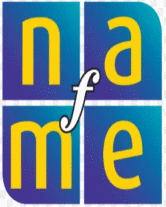Teach students about Chinese percussion instruments and ensemble performances. This lesson was contributed by Han Kuo-Huang.
Objectives
- Students will play in a Chinese percussion ensemble.
- Students will perform several compositions with percussion instruments.
Materials
- Lion Dance Number 1, Lion Dance Number 2, and Dragon Dance(found in Chinese Percussion Ensembles).
- Cymbals
- Small gongs played with a thin wooden mallet
- Large gongs played with a padded mallet
- Large drums played with two thick sticks
Procedure
- Give the students the following background information: The Chinese call their percussion ensemble luogu, which means gongs and drums. The ensemble may range in size from two to a small group of players. Percussion ensembles are used in
a variety of settings: theaters, parades, and folk music groups. The four major instruments used in Chinese percussion music are the bo cymbals, the xiaoluo (small gong), the daluo (large gong), and the dagu (large skin-headed drum). If Chinese instruments are not available, use Western substitutes, such as drums, tam-tam, and small cymbals. - Perform the Lion Dance Number 1 and Lion Dance Number 2 (Found in Chinese Percussion Ensembles)and then perform the Dragon Dance (Found in Chinese Percussion Ensembles). Read the following performance instructions before proceeding:
- The drummer is the leader of the ensemble and sets the tempo (each quarter noteequals approximately 100-112) by striking the drum twice on the rim before eachselection (indicated in the score by the x-shaped note heads). Each compositionrepeats in ostinato fashion. To end the performance, the drummer should play theending signal, which is a drumroll followed by two eighth notes, shown justbelow the appropriate measure of the score. This signal leads the group to theconclusion.
- Perform each composition alone. When the students have mastered the performances, play all the compositions together as a suite, repeating the individualsegments as many times as you wish. When played as a suite, only the introductory signal for the first piece is used; the ending measures of the first and secondpieces are omitted. The ending signals in the first and second pieces becomechanging signals for the next section.
- Perform the Lion Dance Number 1 and Lion Dance Number 2 (Found in Chinese Percussion Ensembles)and then perform the Dragon Dance (Found in Chinese Percussion Ensembles). Read the following performance instructions before proceeding:
Standards Correlations
Standard 2
: Performing on instruments, alone and with others, a varied repertoire of musicStandard 5
: Reading and notating music
Excerpted from Multicultural Perspectives in Music Education.

| Provided in partnership with NAfME |
Teach students about Chinese percussion instruments and ensemble performances. Use this music lesson to celebrate Asian History Month and the Chinese New Year.
TYPE:






